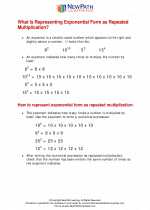Sine Function
The sine function, denoted as sin(x), is a fundamental trigonometric function that relates the angle of a right-angled triangle to the ratio of the length of the side opposite the angle to the length of the hypotenuse.
Definition
The sine of an angle in a right-angled triangle is calculated as the ratio of the length of the side opposite the angle to the length of the hypotenuse.
For a right-angled triangle with an angle θ, the sine of θ is given by:
sin(θ) = Opposite / Hypotenuse
Properties of Sine Function
- The sine function is periodic with a period of 2π.
- The sine function has a range of [-1, 1].
- The sine function is an odd function, meaning that sin(-θ) = -sin(θ).
- The sine function is continuous and smooth.
Graph of Sine Function
The graph of the sine function is a smooth, periodic wave that oscillates between -1 and 1. It starts at the origin (0, 0) and repeats every 2π units along the x-axis.
Common Values of Sine Function
| Angle (in degrees) | Angle (in radians) | Sine Value |
|---|---|---|
| 0° | 0 | 0 |
| 30° | π/6 | 1/2 |
| 45° | π/4 | √2/2 |
| 60° | π/3 | √3/2 |
| 90° | π/2 | 1 |
Application of Sine Function
The sine function is widely used in various fields such as physics, engineering, and astronomy to model periodic phenomena like sound waves, light waves, and other oscillatory motions. It is also essential in solving problems involving angles and distances in trigonometry.
Study Guide
When studying the sine function, consider the following key points:
- Understand the definition of the sine function and how it relates to right-angled triangles.
- Learn the properties of the sine function, including its periodicity, range, and symmetry.
- Practice graphing the sine function and identifying key features of its graph.
- Memorize common values of the sine function for important angles (0°, 30°, 45°, 60°, 90°) in both degrees and radians.
- Apply the sine function to solve problems involving angles, distances, and periodic phenomena.
Mastering the sine function is crucial for understanding trigonometry and its applications in various fields.
.◂Math Worksheets and Study Guides Sixth Grade. Exponents to Repeated Multiplication

 Worksheet/Answer key
Worksheet/Answer key
 Worksheet/Answer key
Worksheet/Answer key
 Worksheet/Answer key
Worksheet/Answer key
 Worksheet/Answer key
Worksheet/Answer key
